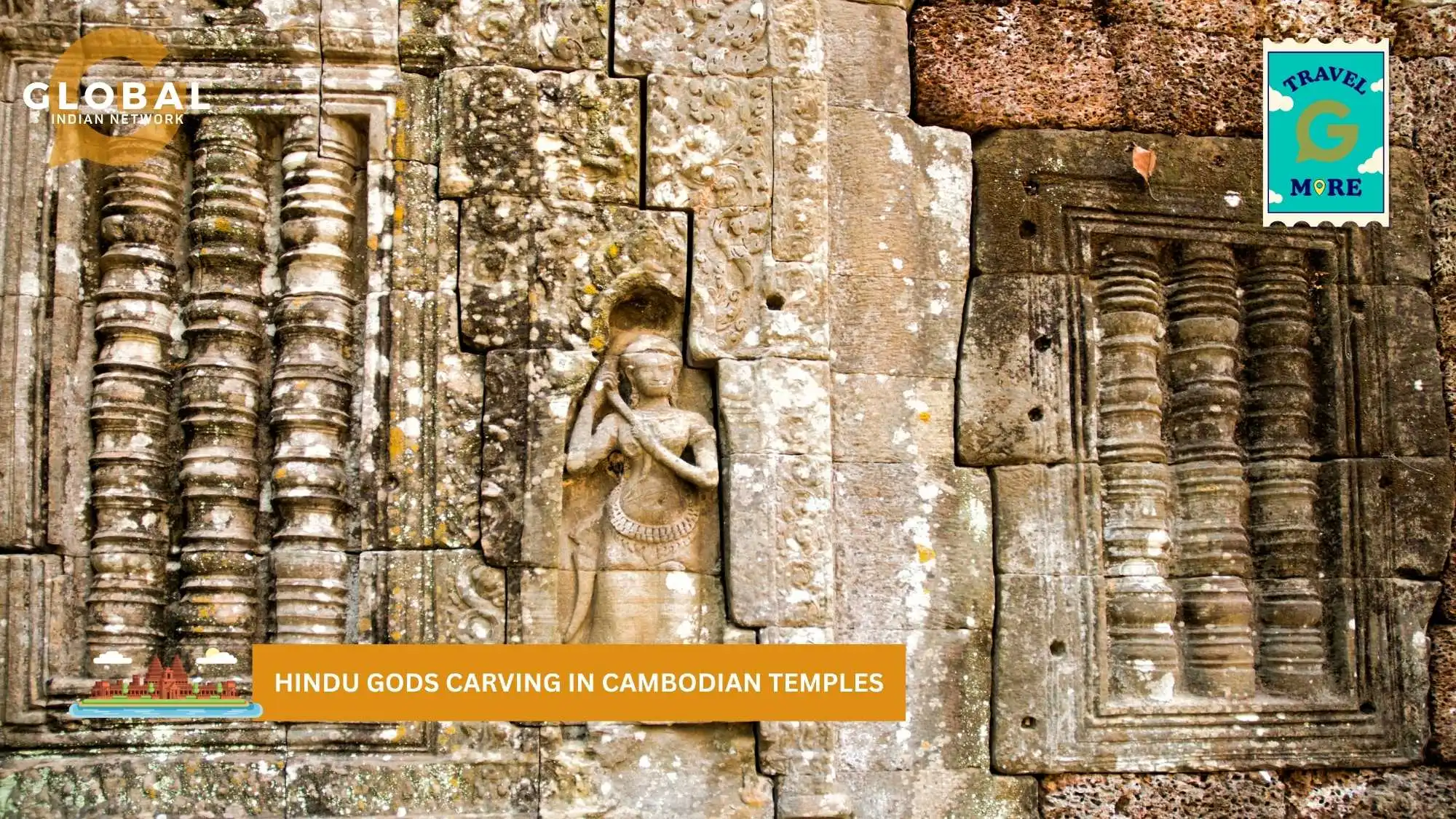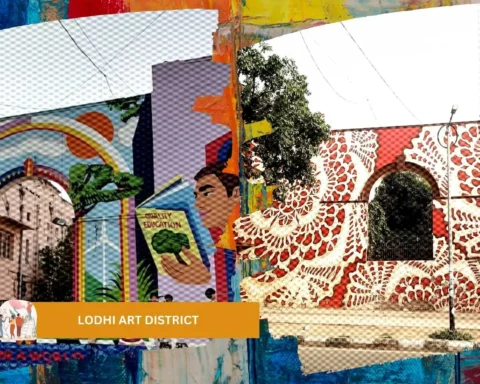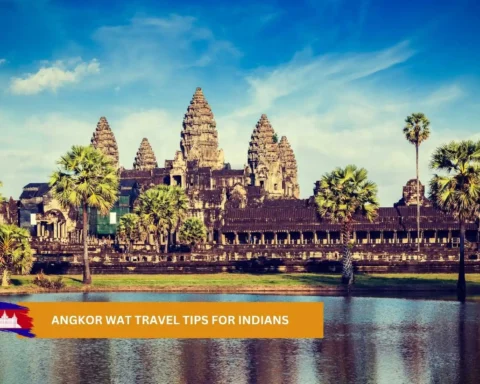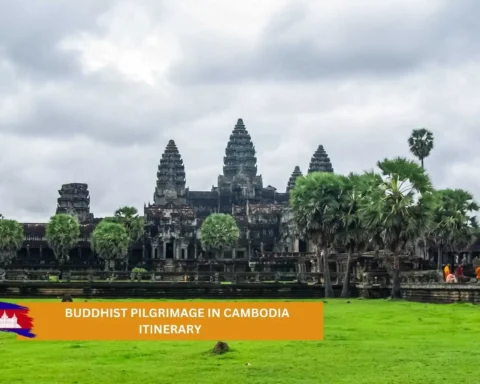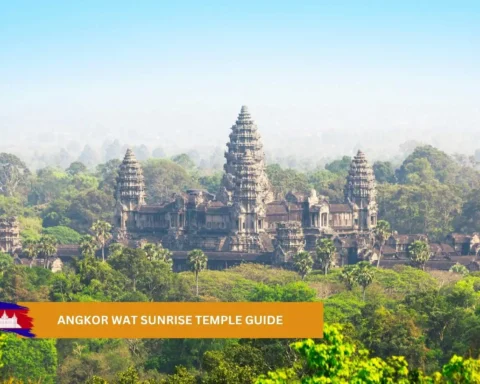A long time ago, when Indian traders began sailing to Cambodia, they didn’t just bring spices and silk; they brought stories, traditions, and beliefs. From this ongoing exchange, a legacy of shared beliefs was born. Cambodia did not just borrow from India; it blended Indian ideas with its own. Among the most lasting results of this cultural exchange is the legacy of Hindu gods carving in Cambodian temples.
These carvings were not just decorative. They were storytelling in stone, capturing epic myths, divine battles, and cosmic ideas in a way that still leaves people in awe. Even today, when you walk through temples like Angkor Wat, you are walking through centuries of faith, art, and imagination. The legacy of Hindu gods carving in Cambodian temples isn’t just something of the past; it’s something you feel even today.
Table of Contents
Hindu Gods Carving in Cambodian Temples
Step into any of Cambodia‘s ancient temples, and you will notice it right away: carvings of gods, goddesses, demons, dancers, and entire scenes from Hindu mythology. These are not random decorations. They are carefully crafted stories passed down through generations.
In Angkor Wat, one of the most famous temples, the epic scene of the Churning of the Ocean of Milk can be found, where gods and demons work together to bring out the nectar of immortality. It’s powerful, detailed, and full of meaning. That’s what makes the legacy of Hindu gods carving in Cambodian temples so incredible; it blends storytelling with sacred symbolism, all in stone.

Temples That Represented Both Religion and Royalty
During the Khmer Empire, Cambodian kings were not just rulers; they were seen as god-kings or Devaraja. So, temples were not just for prayer; they were meant to show the king’s connection to the divine.
The layout of these temples also followed Hindu beliefs. The central tower usually represented Mount Meru (the centre of the universe in Hindu cosmology), and moats around the temples symbolised cosmic oceans. It’s all part of how the legacy of Hindu gods carving in Cambodian temples reflected both spiritual belief and royal power.
Local Art and Global Stories
While the stories originated in India, Cambodian artists interpreted them in their unique way. Deities such as Vishnu, Shiva, and Brahma remained central figures, yet their depiction reflected Khmer aesthetics, evident in their attire, facial features, and stylistic execution. This seamless fusion of Indian religious themes with Cambodian artistic sensibilities is a key reason why these carvings continue to resonate with vitality and cultural depth.
Temples like Banteay Srei, known for its pink sandstone, are especially famous for their intricate carvings. You’ll see scenes like Shiva dancing, Ravana lifting a mountain, or Vishnu flying across the sky, all brought to life with amazing detail. This is where the artistry of Hindu gods carvings in Cambodian temples really shines.
Why It Still Matters Today
You might think this legacy ended with time, but it didn’t. It remains a significant part of Cambodia today. Angkor Wat, originally a Hindu temple, is now a national symbol. You’ll even find it on the Cambodian flag.
Although most people in Cambodia now follow Buddhism, the influence of Hinduism remains evident in traditional dance, in stories like the Reamker (Cambodia’s version of the Ramayana), and even in the small offerings people leave at old shrines. The legacy of Hindu gods carvings in Cambodian temple life hasn’t disappeared; it’s just evolved.
Plus, these temples attract millions of visitors every year. They are not only spiritual spaces. They are also key to Cambodia’s identity, tourism, and culture.
Conclusion
The legacy of Hindu gods carving in Cambodian temples is a powerful reminder of how stories, beliefs, and art can travel and transform. What began with trade and the sharing of ideas evolved into something much larger: a lasting heritage etched in stone.
Today, whether it’s a traveller, a history lover, or someone simply moved by beauty and meaning, these temples continue to speak to you. They’re not just ancient ruins; they are living stories. And in every carving, the legacy continues quietly, beautifully, and forever.

FAQs
Which is the Hindu temple in Cambodia?
The most prominent Hindu temple in Cambodia is Angkor Wat, originally built in the 12th century as a grand temple dedicated to Lord Vishnu.
What is the Hindu sculpture in Angkor Wat?
Angkor Wat houses intricate Hindu sculptures and bas-reliefs, including deities like Vishnu and Shiva, and epic scenes such as the Churning of the Ocean of Milk, reflecting deep religious symbolism.
What is special about Banteay Srei?
Banteay Srei is celebrated for its fine pink sandstone carvings and exceptionally detailed artwork, showcasing Hindu deities and mythological scenes with unmatched craftsmanship in Khmer architecture.
Which Cambodian temple complex was built for the Hindu god Vishnu?
The majestic temple complex of Angkor Wat was specifically constructed to honour Lord Vishnu, making it one of the few major Khmer temples dedicated primarily to a Vaishnavite deity.




